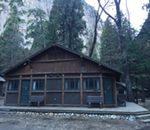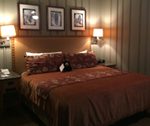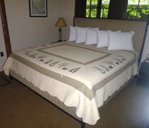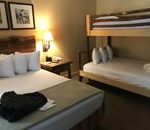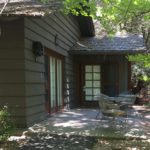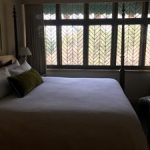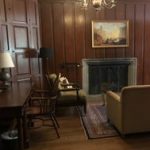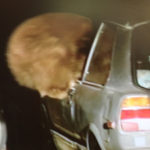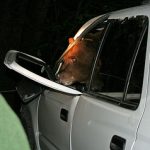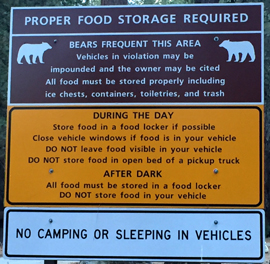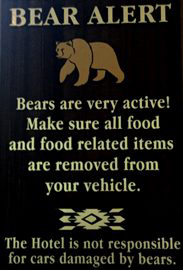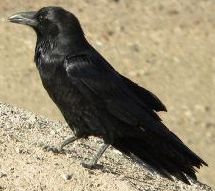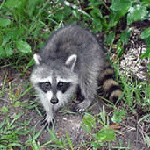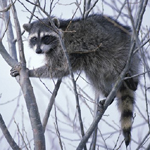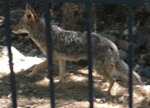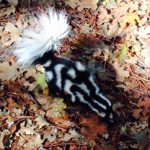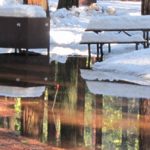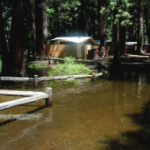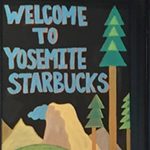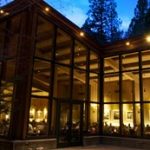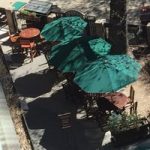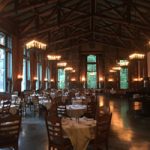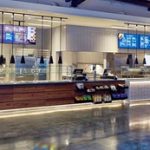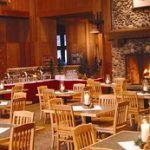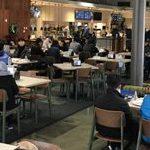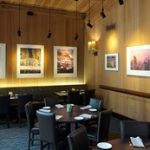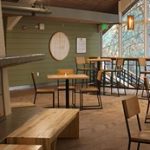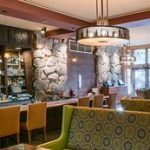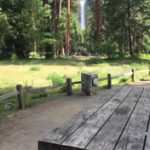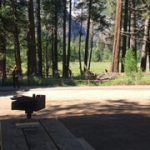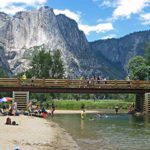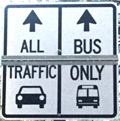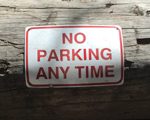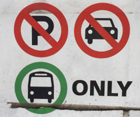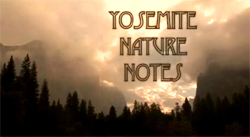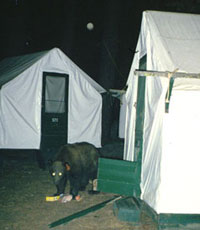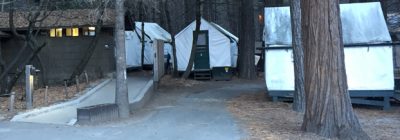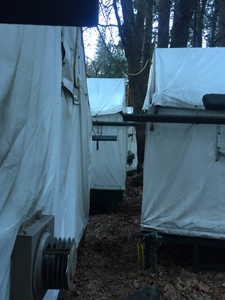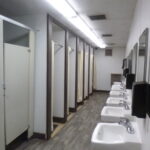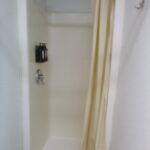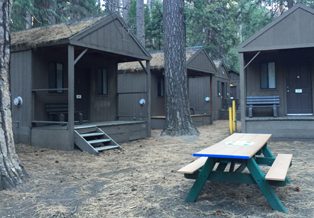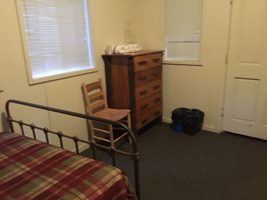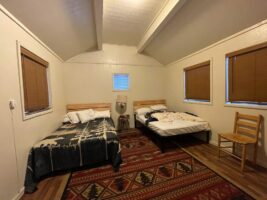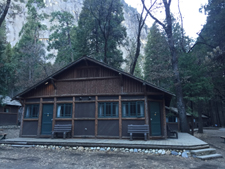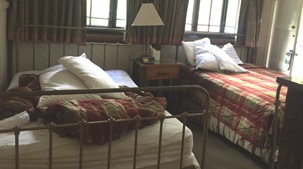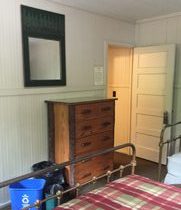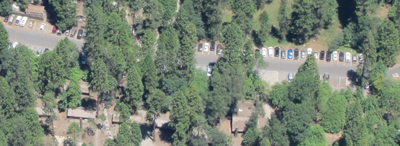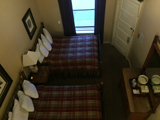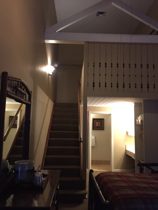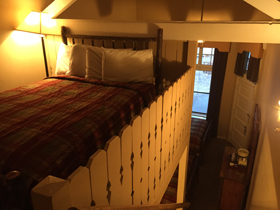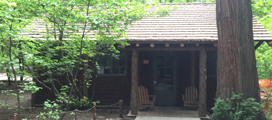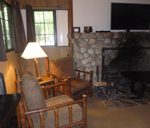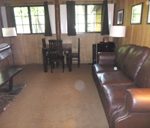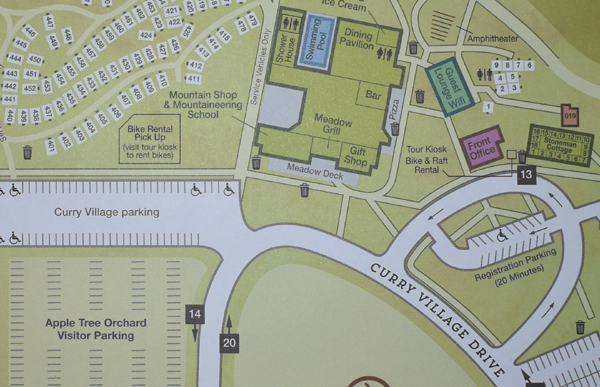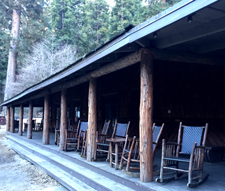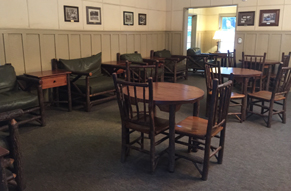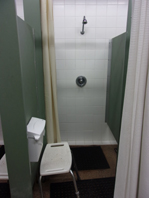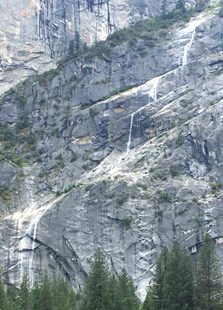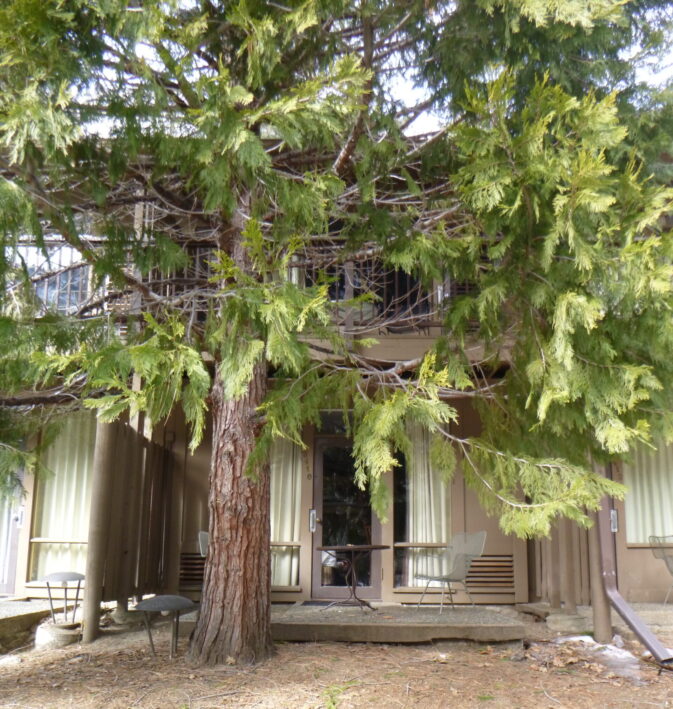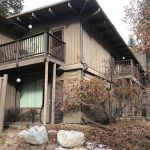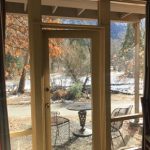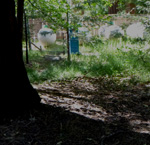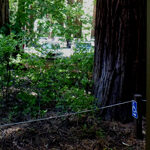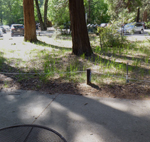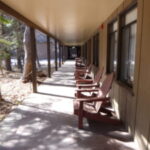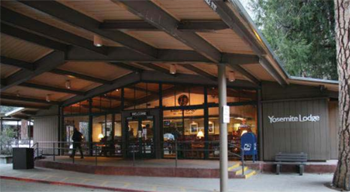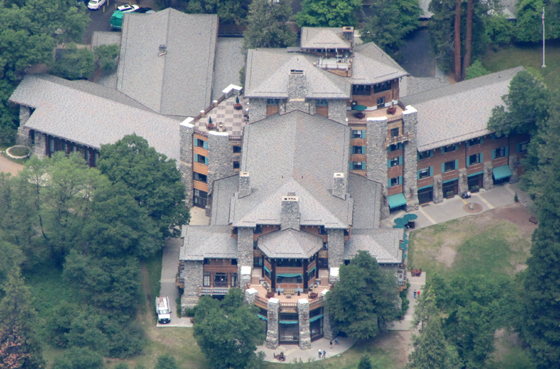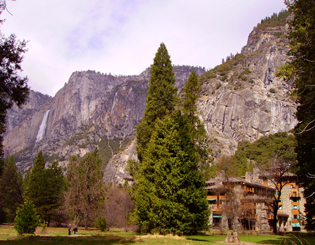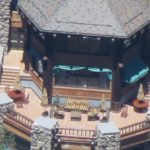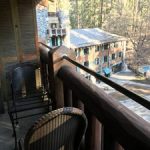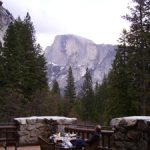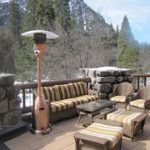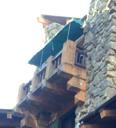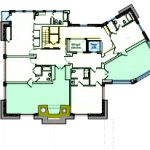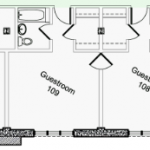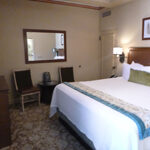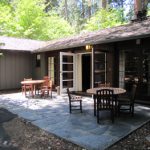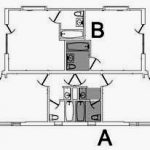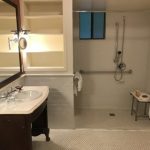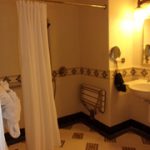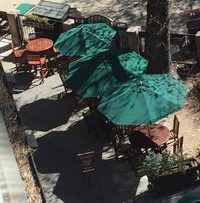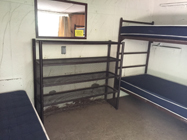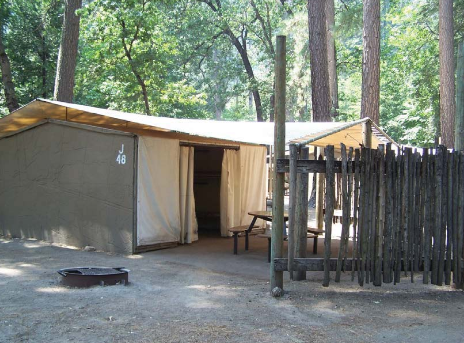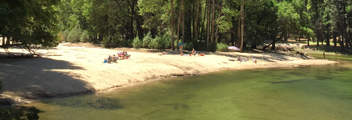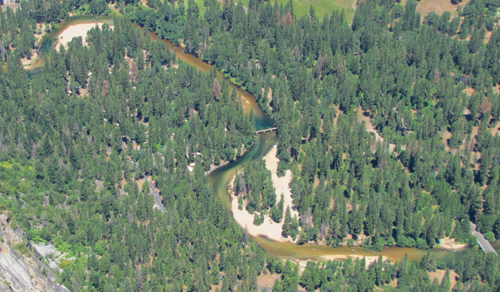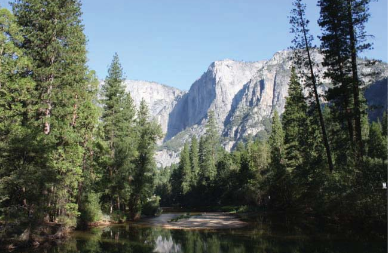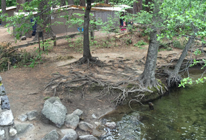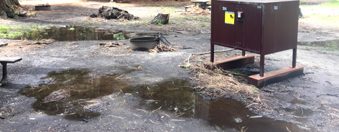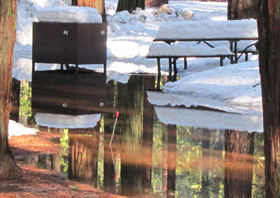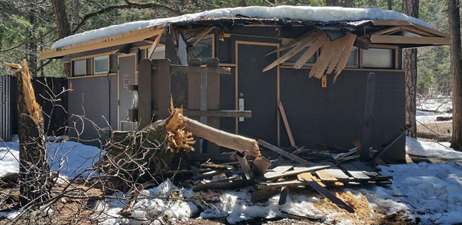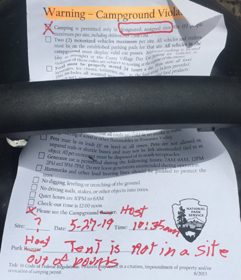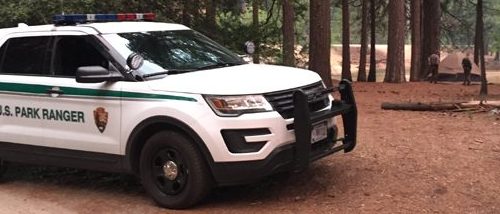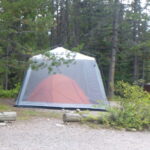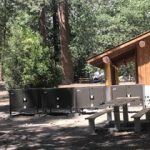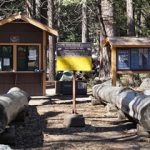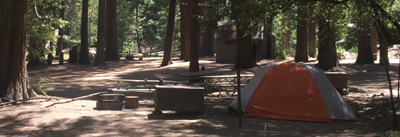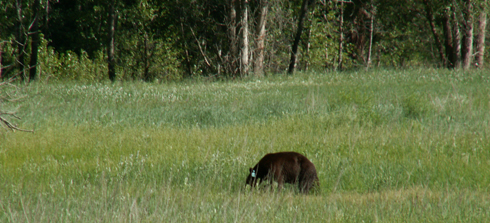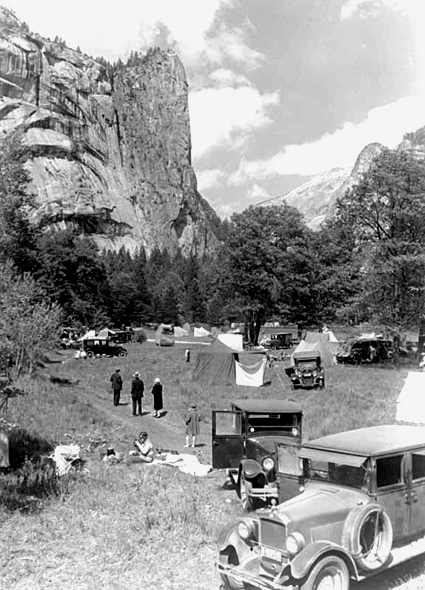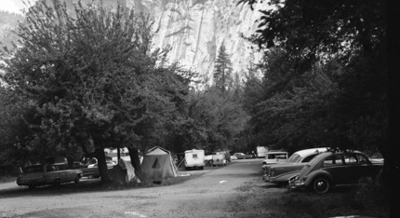You have a wide variety of lodging choices of where to stay overnight in Yosemite Valley in Yosemite National Park
wood-walled cabin with a nearby restroom, canvas tent cabin, wood walled cabin with a bath
luxury or generic hotel rooms, suites with a bath
The Ahwahnee: 121 units
Yosemite Valley Lodge: 245 units
Curry Village: 482 units
Housekeeping Camp: 266 units
Yosemite Valley Family Camp Sites: 459 sites accommodating 2,754 people
Details about each of these are below.
The cost of overnight accommodations is not included in your park entrance fee and
reservations (see links below) should be made well in advance.
(From the park website: “Within Yosemite National Park, you may not sleep in your car or RV except in a campsite that you’re registered to stay in (except at Camp 4, where sleeping in cars is not allowed because it’s a walk-in campground). Sleeping in your car along the side of the road is also not allowed.”)
You can download an app for Yosemite National Park info (best downloaded before you get there when you can find reliable internet), with info about visitor centers, historic places, natural features, and services throughout the park.
“Even without cellular service, the app will be able to share your location on the map and bring up all site content.”
https://www.nps.gov/yose/planyourvisit/app.htm
Cell phone service is NOT available in all parts of Yosemite.
It is usually okay in the vicinity of the Exploration Center.
Many years we got 4 bars for Verizon and 3 bars for AT&T near the Exploration Center, versus 2 bars for each at the Ahwahnee and 2 bars Verizon, 1 bar AT&T in Upper Pines campground, at the Yosemite Valley Lodge, Curry Village and some other locations in East Yosemite Valley.
The park service said: “Cell phone coverage in Yosemite is spotty . . . Cell service is often impacted during daily peak visitation by the large number of people trying to access limited service; if you have four bars of service, but you can’t get a signal, this is why . . . cell coverage depends on your phone, the cloud cover and other seemingly mysterious factors and is not always reliable. ”
There is free wi-fi at some accommodations / locations. Internet service is weak at best, better than in Sequoia National park, but not as good as in Grand Teton National Park. “WiFi bandwidth is limited in Yosemite National Park. The WiFi is only recommended for checking email or some (very) light web browsing. Don’t expect to be able to stream movies or download/upload large files.”
Bears do break in to vehicles in Yosemite National Park (all year) and food storage rules apply all over the park, as in this sign at a day-use parking lot:
Some Yosemite accommodations require the use of a bearbox to store food, toiletries etc.
In others you need to be careful that an ice chest does not show to a bear (or . . .) looking in a window. You need to not only have enough ice chests for all the fruit, milk, yogurt etc., but also either large securely lidded containers or lidded bins for cookies/crackers/granola bars/popcorn/chips/bread that you don’t want the deer mice to nibble on. 
Likewise, valuables left on a shelf, table, desk in a hotel room / cabin / cottage / vehicle that show through a window are an invitation to a thief.
Your overnight accommodation may have you initial and sign a statement when you check in that says, in part: ” I/we will keep all food or other scented items that may attract wildlife sealed and stored according to park regulations. I/we will not leave any food inside of any vehicles.” The park warns: “If your food is stored improperly, you will be cited for improper food storage (fine of up to $5,000).” See also an index to over a dozen park webpages with park laws, rules, regulations and policies.
Yosemite all-year resident Ravens are bigger than a Crow you might see at home. Ravens are 24 inches long and have a wingspan of 53 inches, Crows are 17.5 inches long and have a wingspan of 39 inches).
Caw vs. Croak: Inside the Calls of Crows and Ravens
Ravens will take any food you leave unattended on a picnic table, even flipping metal room service dish covers off your plate. Keeping food within arm’s reach is a wise idea at each of the outside dining venues, hotels, picnic areas, campgrounds and where you stop to eat on a trail. The park warns: “If your food is stored improperly, you will be cited for improper food storage (fine of up to $5,000).” See also an index to over a dozen park webpages with park laws, rules, regulations and policies.
Raccoons and other animals can climb up to hotel room balconies, so no, you can’t store your ice chest or other food on your balcony. Raccoons learn how to unzip tent doors and have torn screens off room windows if you leave your window open when you are not in the room.
“Smoking is strictly prohibited at all accommodations and buildings in Yosemite.”
Your overnight accommodation may have you initial and sign a statement when you check in that says, in part: “I/we understand Yosemite National Park Lodges are smoke-free environments. A $250 fee will be assessed for smoking in a guest room. Designated outdoor smoking areas are available.”
PETS
Your overnight accommodation may have you initial and sign a statement when you check in that says, in part: “I/we understand that pets are not allowed in Yosemite National Park lodging, except service animals.”
And your pet is also not allowed on the free shuttle buses or on trails.

You can find wild animals anywhere in the park and do not want your dog to personally meet one of them, such as this bobcat on a patio at a Yosemite hotel, or this coyote walking just outside the fence at a Yosemite swimming pool, or even more fun, picture your off leash dog wanting to greet a skunk, such as this one on the grounds of a Yosemite hotel (photo courtesy of Harold (Harry) Bradbury):
Some winters they offer a “Winter Fun pass” which might include the following: “Lift ticket/gear rental at Badger Pass Ski Area. Ice skating pass/skate rental for Curry Village Ice Rink. Rental for cross-country ski gear at Badger Pass Ski Area. Rental for snowshoes at Badger Pass Ski Area. Two-hour Valley Floor Tour – guest will need to reserve tickets for tour time of their choice. Additional Winter Fun passes can be purchased.” The prices for with the fun package or without it will show up at the reservations availability webpage. If you make your reservations well in advance before they make the offer you might get an email closer to when you are coming asking if you want to upgrade.
The park service notes that Electric Vehicle (EV) charging stations
are located in Yosemite Valley at:
The Ahwahnee (six level 2, 6 kW/h)
“You do not need to be a guest at the hotel to charge your vehicle, however, you must move your vehicle from the space once it is finished charging”
Curry Village (west lot – next to the ice rink) (20 level 2)
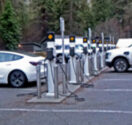
Yosemite Valley Welcome Center (Yosemite Village) (four level 2)
Yosemite Valley Lodge (eight level 2)
Located by Alder building and between Juniper and Laurel buildings
Yosemite Falls Parking (10 level 2, 11 kW/h) Located just west of Yosemite Valley Lodge
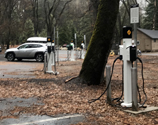
Sometimes the Yosemite valley electric vehicle charging stations need repairs
and will not be operable, perhaps even for days.
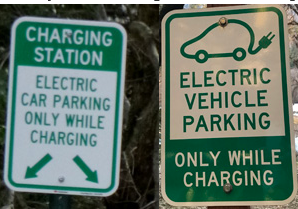
——————————————————————-
Info about booking a wedding in Yosemite National Park is at:
https://www.travelyosemite.com/group-travel/weddings/
Park Service rules about permits for Weddings & Commitment Ceremonies in Yosemite National Park, with links to wedding locations/ rules for their use in Wawona, Glacier Point, Tuolumne, Big Oak Flat and in the valley including using the Chapel, are at:
https://www.nps.gov/yose/planyourvisit/weddings.htm
Take a 3D tour of the Yosemite Chapel (you can schedule ceremonies there):
https://matterport.com/discover/space/8Lb4uLHidao
——————————————————————-
All or parts of campgrounds, and even Housekeeping Camp and Curry Village accommodations, can be subject to “temporary safety closures” during high winds and / or flooding. Rangers and other staff will be patrolling the campgrounds telling people where to relocate to. The Ice Rink and/or ski resort can also close.
All three of the highways that give access to Yosemite Valley can be closed at once, due to flooding, heavy snow accumulation or rockslides / mudslides.
One morning you might find a note slipped under your door:
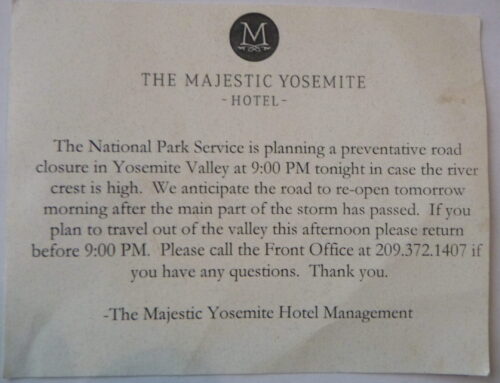
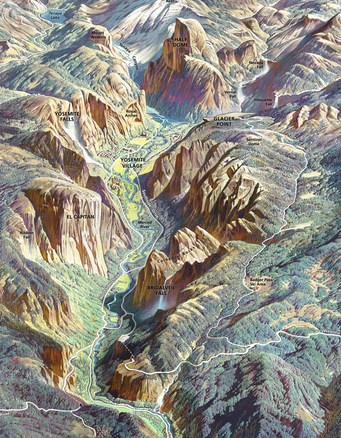
You can download a copy of the Yosemite panorama above at:
https://npgallery.nps.gov/HFC/SearchResults?allFields=yosemite&allFieldsFormat=AllWords&collection=HFC+Cartography&view=list&PageSize=24
and can enlarge it:
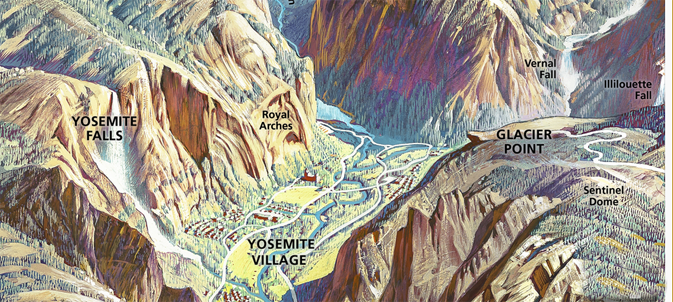
The Ahwahnee hotel is the building in red on the map above just below Royal Arches, in almost the center of the map.
The tiny dots at the bottom of the poster are the Yosemite Lodge Buildings.
The trail to the top of Half Dome goes past Vernal and Nevada Falls and can start down in the valley, or at Glacier Point.
![]()
This page has the following descriptions, in this order:
Restaurants
Parking
tent cabins at Curry Village (Curry Village was briefly named Half Dome Village)
wood walled cabins without a bath at Curry Village
log and wood walled cabins with a bath at Curry Village
‘Stoneman Cottage’ hotel-type rooms with a bath at Curry Village
Curry Village Cabin 819
Curry Village general info
Yosemite Valley Lodge
Ahwahnee Hotel (briefly named the Majestic Yosemite Hotel)
Housekeeping Camp
Camping in Yosemite Valley campgrounds that take reservations
Camping in the Yosemite Valley Camp 4 (sometimes written Camp Four)
Camping in backpacker’s walk-in
Notes about Yosemite Valley free shuttle bus stops for overnight accommodations to save you time.
Yosemite National Park entrance fee

To look at room reservations availability:
https://www.travelyosemite.com/lodging/yosemite-lodging-experience/
At the top right corner click on the dark blue square CHECK RATES, and the box where it says
“Plan Your Trip Now”
choose “All Yosemite Lodging”
Leave it set for 2 adults to get a larger list of options, but realize
some rooms only hold 2 people – rollaway beds will not fit or are not available,
and there may be an additional small charge per person for more than 2 adults at some of the lodgings.
And note that some extra packages, such as a Winter Fun package, or as a part of a special dining event, cost extra.
(OR instead of All Yosemite Lodging, you can search for rooms in Yosemite Valley only at Curry Village, Housekeeping Camp, the Ahwahnee Hotel, or Yosemite Valley Lodge
or outside Yosemite valley at the Wawona Hotel, Tuolumne Meadows Lodge or White Wolf Lodge.)
I suggest you book your room(s) directly through the hotel(s)
at the above link
and book campsites directly through the recreation.gov page,
see info at https://www.nps.gov/yose/planyourvisit/nrrs.htm
One 3rd party on-line booking website gives you (and charges you for) a “reservation request”, then their computer system app starts looking for a room. You can arrive at the hotel thinking you have a room reserved, but there is no reservation.
Yosemite Valley hotel rooms at the Lodge, the Ahwahnee or Curry Village with two double beds might be listed at a third party booking site as having two queen beds, a sure way to frustrate guests who book through that third party, and who cannot switch to a two queen bedroom when they check in because there are none.
People have searched for Ahwahnee reservations and found a cabin, cottage, homestead cottage, bunkhouse, glamping, hideaway, cozy family cabin, – located in the town of Ahwahnee, California.
Some of them thought they were getting a reservation for the Ahwahnee Hotel in Yosemite Valley and have shown up at the front desk, only to be turned away when the hotel is full (and turned away from the park when all overnight accommodations and campgrounds are full, which can be often in warm months and holiday weekends).
(According to CSAA, the town of Ahwahnee is 1 hour and 36 minutes / 53.9 miles from the Ahwahnee Hotel. Yosemite Forks is a town 1 hour and 19 minutes / 41.4 miles from Yosemite valley.)
Some rentals / campsites found through a Yosemite search (but not all of them)
make it clear they are “near” Yosemite, or “just outside” Yosemite, or “by” Yosemite, even “at Yosemite”
but not in the park.
Some rentals / campgrounds outside of the park do not mention when Yosemite National Park has the policy that a “reservation is required to drive into or through Yosemite during peak hours. . .”
Other searches have turned up links to “top-rated . . . best . . . most popular . . . cabins, cottages, bunkhouse, glamping, campsites for rent in Yosemite Valley” that are not actually in Yosemite Valley, but are on private land within Yosemite, near the Foresta or Wawona area, (12 to 27 miles from Yosemite valley)
or not in Yosemite National Park at all, but in a supposed “town” named “Yosemite Valley”,
or just outside the park in Groveland, (CSAA says 1 hour 14 minutes, 48 miles to Yosemite valley)
or Mariposa, (CSAA says 1 hour 10 minutes, 43.6 miles to Yosemite valley).
Some places you discover on a search offer photos of Half Dome, El Capitan or Yosemite Falls that could cause people not familiar with Yosemite to think they would get a view of, or at least be near these places, but the hotel/resort/cabins with these photos at their webpages are not near the park.
People have also done a search and thought they had a reservation for the Yosemite Lodge (aka Yosemite Valley Lodge) in Yosemite National Park, and have shown up at the front desk, but the hotel they had a reservation for was the Yosemite View Lodge, 14 ½ miles away, outside the park.
Yet another third party on-line booking website has had prices twice what the hotels charge, and when you check in you discover that the Ahwahnee Hotel or Lodge or Curry Village can not change your reservation or refund you any of the excess price you paid.
One student going on a Yosemite trip made the mistake of using a third party reservation system.
His reservation said, in part,
“(Brand XXX Reservations) has charged an additional ten percent non-refundable fee in the amount of $119.35 to your credit card, as described on our website and phone message.”
This extra, non-refundable fee is beyond what it would have cost to book directly through the official Yosemite National Park hotel concessionaire. Third party reservation systems can not get anyone a lower price or better availability for a room/cabin/tent cabin in Yosemite National Park than they can get by booking directly at the link we recommend using: https://www.travelyosemite.com/lodging/yosemite-lodging-experience/
– – – – – – – – – – – – – – – – – – – – – – – – – – – – – – – – – – – – – – – – – – – – – – – – – – – – – – – – – –
Restaurants in Yosemite valley
Menus, locations and details are at Yosemite valley restaurants, coffee bars, cafeterias, pizza, food service and groceries including
reservations (or not)
inside or outside seating (or both)
links to hours of operation (which depends on the time of year),
for any / all of the dining and grocery stores at, or near to, the overnight accommodations at this webpage.
There are very few places at most overnight accommodations where you can picnic with a picnic table, and no grills. But there are many places in Yosemite Valley with picnic areas, some with grills and even views.
See the full sized map at: https://www.nps.gov/yose/planyourvisit/picnic.htm

– – – – – – – – – – – – – – – – – – – – – – – – – – – – – – – – – – – – – – – – – – – – – – – – – – – – – – – – – –
Parking:
– – – – – – Whenever you park in an area you are not familiar with, take a photo on your smart-enough phone, standing a bit away from where you parked, so you can find your vehicle.
(If you get on a shuttle bus, (note the shuttle bus stop number) turn around briefly and look back in the parking lot to find where your vehicle is (to the right, left, straight ahead, how many rows back?) OR where your tent cabin / cabin is, and you will be able to find it much more easily when you return to it after a day of sightseeing.) – – – – – –
All campsites except in Camp Four and Backpackers walk-in have parking AT each campsite.
At the Lodge and Curry Village cabins with a bath there are some UN-assigned parking spaces near or next to most buildings.
A few of the Curry Village tent-cabins are very near potential parking spaces, but these UN-assigned parking spaces might be occupied by someone else when you arrive.
At the Ahwahnee hotel (briefly named the Majestic Yosemite Hotel) there were some free UN-assigned parking spaces in a small parking area (dirt or mud/snow). On March 31, 2023, guests at the hotel were told that dirt (or mud/snow) long road / lot is free public or guest parking and all the large paved parking lots (for example, surrounding the free shuttle bus stop) had become paid valet parking only. In May 2023 the hotel website did not mention any free parking access for the public or guests, even on the sides of the dirt road leading west from the paved parking. As of early 2023, the fee for parking at the Ahwahnee Hotel is: Rates: overnight – hotel guests only $30, day-use $15, day-use with validation $10. The website noted: “Validation is given when there is a purchase of product and/or food and beverage from Sweet Shop, Ahwahnee Gift Shop, Bar or Dining Room.” https://www.travelyosemite.com/alerts/2022/the-ahwahnee-construction-faqs-jan-2023-until-oct-2023/
The Park Service said, in the Yosemite Guide, August 2023 :”After more than 95 years in service, The Ahwahnee is continuing a multi-phase comprehensive rehabilitation plan to preserve the hotel’s historic integrity, while bringing the building to code with modern fire and seismic safety standards. Scaffolding and construction noise may be present during parts of the rehabilitation project.
Due to these historic projects, Ahwahnee parking lot space has been reduced. Parking is valet only with a $30 nightly charge, $15 day-use or $10 with validation. This change will only be during this historic project and will return to normal upon completion.”
See details about (day-use parking) parking in Yosemite without an overnight accommodation and the rarely designated overnight parking available at overnight accommodations
Parking and Traffic Jams in Yosemite Valley Tips and Tricks.
– – – – – – – – – – – – – – – – – – – – – – – – – – – – – – – – – – – – – – – – – – – – – – – – – – – – – – – – – –
Only some Yosemite accommodations have TVs. All the Ahwahnee Hotel rooms have large screen televisions with an in-house TV channel that plays videos from the Yosemite Conservancy Nature Notes series. You can “upgrade” your lower cost overnight accommodation by downloading the nature video series in advance of your trip and then watch them on your laptop.
You can watch or download the videos at:
https://www.youtube.com/playlist?list=PL890957589F8403A4
– – – – – – – – – – – – – – – – – – – – – – – – – – – – – – – – – – – – – – – – – – – – – – – – – – – – – – – – – –
And see weddings: https://www.travelyosemite.com/media/381361/yosemite-weddings-and-social-events_brochure.pdf
and group / corporate meetings: https://www.travelyosemite.com/media/381362/yosemite-group-and-corporate-meetings_brochure.pdf
– – – – – – – – – – – – – – – – – – – – – – – – – – – – – – – – – – – – – – – – – – – – – – – – – – – – – – – – – –
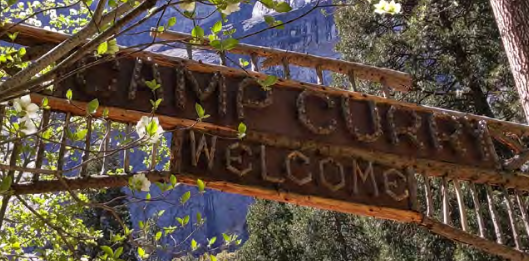
tent cabins at Curry Village
– – – those without camping gear (or who just want to be more comfortable) might choose a wood-floored, canvas roofed/sided tent cabin, (unheated or heated – “Heat is turned off the Friday before Memorial Day and turned on the Tuesday after Labor Day” – , with clean sheets and blankets, but bring a really good sleeping bag, they have a few sleeping bags for rent but not that many) with various double bed and single bed combinations, electric lighting, restroom/showers nearby, lounge with free guest WiFi, but no phones / TV/ mini fridge. (Renting a tent cabin could be less expensive than renting a good tent and other required winter camping gear) The Curry Village website did not mention that the heated tent cabins have electric outlets. I was told that yes, they do, but you have to unplug the heater fan to use the electric plug to, for example, charge your cell phone. From this description you can tell this will not be “glamping” – glamorous camping that some tent cabin accommodations outside of Yosemite offer.
Detailed instructions and advice for first time visitors to have a better vacation in these tent cabins includes choosing a cabin and using the tent cabins in cold weather.
The logistics section includes this: When you get there, or at least before you go to sleep, stand on the front porch of your cabin and figure out where the nearest restroom is. In the dark, even with a flashlight or headlamp, finding your way there could leave you lost or at least a bit frustrated. The restroom is between which other tents / buildings? Which end is the men’s restroom and which end the women’s? Which part of the side / end is which entrance? What route should you take to miss the large puddles that could need wading through if it rains much more? (Trying to get into a linen storage building you mistake for a restroom in the middle of the night, or heading for an actual restroom that is not open in the off-season is no fun.)
Below (photo courtesy of the NPS) are some of the canvas tent cabins and a bear that broke into one people left food in. Always use the bearboxes provided at each tent cabin and campsite.
Below are Curry Village canvas tent cabin interiors.
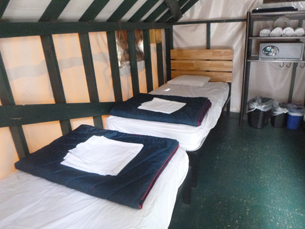
This photo shows the heater and on the shelves, a safe.
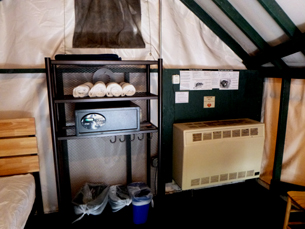
Here is a link to a map at their website, of all the tent cabins / cabins without a bath (in white) and wood walled cabins with a bath (in orange) /shower house/restrooms/pool/restaurants and more.
https://www.travelyosemite.com/media/825704/curry_village_property_map_2023.pdf
Notice which tent cabins are right next to restrooms for convenience in the weather but potential noise all night, or which are actually a longer walk to restrooms.
Notice that tent cabins 1-9 are nearest to the bus stop for the free bus to the ski resort and nearest to the guest lounge, and notice that they are quite close to each other and to restrooms:
(The restroom building on the left in the photo above has a individual restroom up the ramp for a wheelchair on the end of the building shown in the photo, and at the other end of the building, many more stalls / sinks.)
Try to choose a tent cabin to ask for that does not have a potentially-noisy-any-time-of-the-day-or-night metal trash bin next to it, as in the large brown bin near the right hand side of this photo:

and note which tent cabins are very close to each other, (and bring good quality earplugs, not the simple foam ones, but the ones with a thicker wax-like quality, often made with silicon putty):
Some of the canvas tent cabins are heated and cost more. I was told that the unheated tents (with shared bathrooms/showers in the vicinity) are (on the map), 1-5, 466-482, 501-578, 601-691 & 701-752, and that the heated tents (with shared bathrooms/showers in the vicinity) are 6-9, 401-465, 214-299, 301-345.
Also note when you look at the map that a few Curry Village tent cabins are right on an access road and will have car / truck noise and headlights (especially #345, #344, #343).
Some tent cabins have trees for some shade, some do not:

All the canvas tent cabins have bearboxes (food storage lockers).
Lots of details to make your stay in a tent cabin more fun are at: Yosemite valley tent cabins tips and tricks
Google maps 360 degree view of part of the tent cabins area, and another view.
You can click around at this 3D tour of Curry canvas tent cabin 563 https://matterport.com/discover/space/6WXaTP7tJq2
and this 3D tour of 456: https://matterport.com/discover/space/b4Gv2ePnxDW
This 3D tour starts at the Curry Village Mountain Shop, and you can click through to go outside and then go the Curry Village store:
https://matterport.com/discover/space/SbQsL39U22U
– – – – – – – – – – – – – – – – – – – – – – – – – – – – – – – – – – – – – – – – – – – – – – – – – – – – – – – – – –
wood walled cabins without a bath
at Curry Village (also sometimes known as bungalettes).
On the map, the boxes numbered in the 1100s (1101 – 1114) are wood walled cabins with two double beds, electrical outlets, and with some of them, a small covered front porch you can stand on and shake water off your rain jacket, etc. before you enter the cabin (shared restroom /showers very nearby).
Here, photos of a shower house / restroom interior at the wood walled cabins without a bath area:
Detailed instructions and advice for first time visitors to have a better vacation in the Curry Village canvas- walled tent cabins has advice that applies to the wood walled cabins. For example, the logistics section includes this: “When you get there, or at least before you go to sleep, stand on the front porch of your cabin and figure out where the nearest restroom is. In the dark, even with a flashlight or headlamp, finding your way there could leave you lost or at least a bit frustrated. The restroom is between which other tents / buildings? Which end is the men’s restroom and which end the women’s? Which part of the side / end is the entrance? What route should you take to miss the large puddles that could need wading through if it rains much more? (Trying to get into a linen storage building you mistake for a restroom in the middle of the night, or heading for an actual restroom that is not open in the off-season is no fun.)”
Unfortunately, some of the cabins have a parking area close to them, with potential noise and headlights all night (and not all of them have front porches):
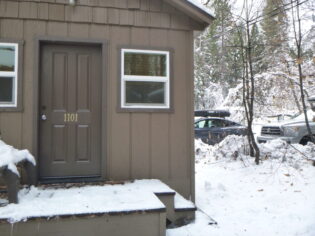
You can click around at this 3D tour of 1105: https://matterport.com/discover/space/oYKEwGH4fiK
– – – – – – – – – – – – – – – – – – – – – – – – – – – – – – – – – – – – – – – – – – – – – – – – – – – – – – – – – –
log and wood walled cabins
with a bath at Curry Village
are numbered 1A-22B on the map. They are in duplex and fourplex configurations and all share a wall with at least one other cabin, and each has it’s own bathroom with a shower.
original architectural drawing of the 1A, 1B, 1C & 1D fourplex:
original architectural drawing of the duplex 51A and B:
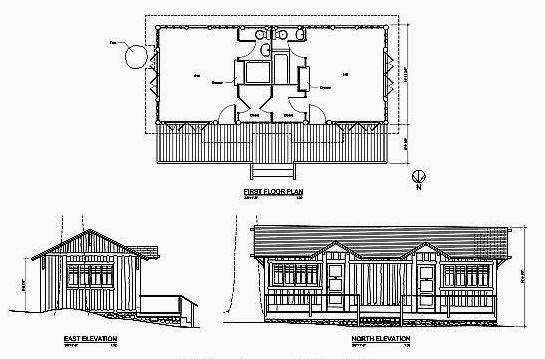
original architectural drawing of the fourplex 55A,B-64A,B
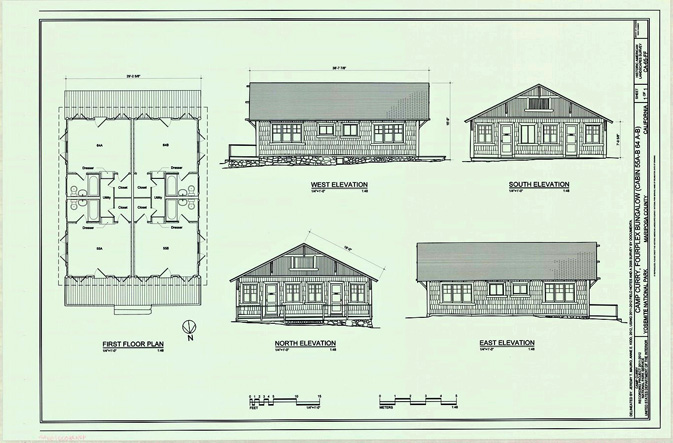
No need for a bearbox (food storage locker) to store food, as you are allowed to keep food in these cabins, but please keep it away from view by a bear in the windows and do not leave out chips, boxes of crackers, etc. that mice could get into. (Suggest ice chests (no ice) with a heavy lid or plastic bins with lids that clip on.)
The layout on the map would make you think that the row of cabins at the back (orange boxes 17A to 22B) look out to the forest, but there is a row of cabins now only used for storage behind them that do not show on the map.
Note that at many of the lower cost units there is no room between at least one of the double beds and the wall.
You can click around at this 3D view of Curry Cabin 8B, and click to step outside:
https://my.matterport.com/show/?m=WCyUcS8yvto&cloudEdit=1&ss=3&sr=-2.86,-.57
Google maps 360 degree view of some of the Curry Village cabins with a bath and the parking lot closest to them.
They have more convenient (not-assigned and could be full when you arrive) parking than the tent cabins:
– – – – – – – – – – – – – – – – – – – – – – – – – – – – – – – – – – – – – – – – – – – – – – – – – – – – – – – – – –
‘Stoneman Cottage’
at Curry Village
(also known as Stoneman House, originally the Curry Village Dance Pavilion) has hotel-type rooms each with it’s own bathroom with a shower, with a wide roofed porch all the way around the building, see the green rectangle labeled Stoneman House at the map.
https://www.travelyosemite.com/media/825704/curry_village_property_map_2023.pdf
(Stoneman is on the right in the photo below.)
No need for a bearbox (food storage locker) to store food, as you are allowed to keep food in Stoneman House hotel rooms, but please keep it away from view by a bear in the windows and do not leave out chips, boxes of crackers, etc. that mice could get into. (Suggest ice chests (no ice) with a heavy lid or plastic bins with lids that clip on.)
Most of the Stoneman rooms have two double beds. You can click around at this 3D tour of Stoneman 807. on a corner of the building. ( Click ta the doorway to step outside and see the roofed walkway/deck around the Stoneman Building:
https://matterport.com/discover/space/8Y91UpaYYis
Four of the Stoneman rooms have two double beds downstairs and another double bed in an upstairs loft,
downstairs as seen from above:
looking up the stairs from the lower level:
and the upstairs loft double bed:
You can click around at this 3D tour of Stoneman 808:
https://matterport.com/discover/space/wMUC8wece3N
If you stuff the maximum number of people in one of these units, sharing the shower could be difficult, but the main shower house is a short walk away, next to the (warm months only) swimming pool.
– – – – – – – – – – – – – – – – – – – – – – – – – – – – – – – – – – – – – – – – – – – – – – – – – – – – – – – – – –
Curry Village Cabin 819
(originally the Curry Village Men’s Lounge), with a bath (shower, no tub) and small living room/fireplace, separate bedroom, TV in the living room and in the bedroom, as well as a small dining table and chairs in the living room, was “historically renovated” through early 2018, including replacing the wood-burning fireplace with a gas log ‘fireplace,’ and taking out a giant closet to make space for enlarging the bathroom. It is free-standing, sharing no walls with neighbors. Find it behind Stoneman Cottage.
No need for a bearbox (food storage locker) to store food, as you are allowed to keep food in 819, but please keep it away from view by a bear in the windows and do not leave out chips, boxes of crackers, etc. that mice could get into. (Suggest ice chests (no ice) with a heavy lid or plastic bins with lids that clip on.)
Original architectural drawings for Cabin 819 when it was the Camp Curry Men’s Lounge:
– – – – – – – – – – – – – – – – – – – – – – – – – – – – – – – – – – – – – – – – – – – – – – – – – – – – – – – – – –
Curry Village general info
– – – COST and AVAILABILITY of all potential Curry Village overnight accommodations can be found at: https://www.travelyosemite.com/lodging/curry-village/
They recommend “ear plugs for additional sleeping support,” and a padlock for your food locker. Valuables should be stored in the mini-safe in the tent cabin, not in the food locker.
From their website with info about the food storage lockers: “Your cabin comes with one locker measuring:
35.5″W x 20.5″D x 23″ H (Small Tent Cabins)
47.5″W x 20.5″D x 23″ H (Large Tent Cabins)
Guests who don’t comply with our food storage policies may receive a fine up to $5,000.00 and be removed from the Park. Vehicles used for food storage may be impounded.”
On this map below note the office you will check in at, the pink almost-square labeled “Front Office” at the upper right of the map below, as well as the registration parking lot.
In front of Stoneman Cottage is also the usual bus stop for the free winter bus to Badger Pass Yosemite Ski resort. The winter free bus to the ski resort https://www.travelyosemite.com/winter/badger-pass-ski-area / ranger snow shoe walk leaves (most years) from Curry Village, then from a covered bus stop adjacent to the garage in Yosemite Village, shortly after (some years) from the Ahwahnee Hotel and the last pick up is from the Yosemite Lodge Porte Cochère (covered driveway in front of the hotel lobby building) 8:30 and 11 a.m.
Note that it is a different bus, with a more rigid schedule, than the free Yosemite Valley shuttle bus.
And please note that Yosemite valley free shuttle bus routes changed in 2024. Stop number 20 on the map below is now stop number 19.
After a major snowfall or due to ice, the buses do not run to stops (15, 16, 17 and 18, sometimes 19 as well) on the Happy Isles loop road.
Here, an aerial photo with the main parking lot, and to the lower left, the stores, restaurants, swimming pool:
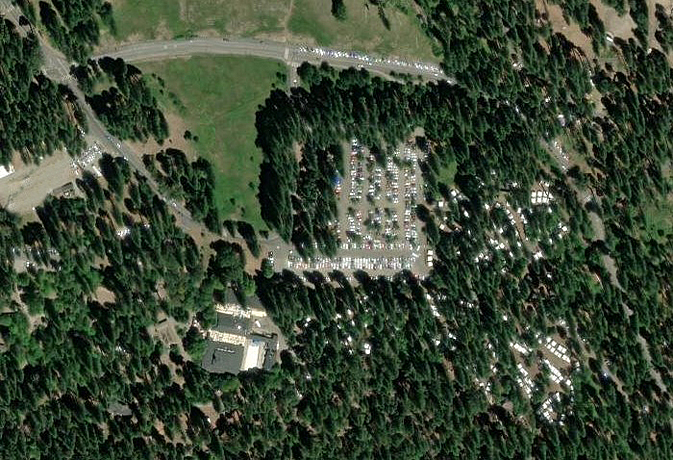
There are no TVs, phones, microwaves or refrigerators at the Curry Village tent cabins, cabins with a bath or at Stoneman Cottage. (One-of-a-kind cabin 819 does have TVs in both the living room and bedroom.)
Free Wi-Fi for people staying at Curry Village is not in any individual overnight accommodation, only in the Guest Lounge which has lots of tables, chairs, desks and a fireplace in season (see the teal colored rectangle in the map above).
and even though there are dining tables in the lounge, you might find this sign on the door:
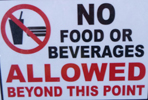
and the usual warning sign:

Large pictures of the Curry Village lounge and vicinity are at:
https://www.argsf.com/portfolio/curry-village-lounge-and-registration-buildings-rehabilitation/
Guests at Curry Village and people who are not guests at Curry Village can book a tour, pay to rent a bike or a raft (in warm months), or pay for winter ice rink use/ skate rental at the little Tour Kiosk between the front office and Stoneman Cottage. Bike rentals are often offered at the Yosemite Lodge for a longer season than at Curry Village.
If you want to rent a raft, rental reservations in advance are advised, up to 80% of rafts are reserved the day before. http://www.travelyosemite.com/things-to-do/rafting/
The Bike Rental Pick Up area is to the west of the stores and food, north of the parking lot. This photo of bike rentals pick-up area is taken from the direction of the Curry Village guest parking lot.
The permanent ice rink was removed winter 2016-2017 and replaced with a seasonally installed portable ice rink in a parking lot, which promptly flooded in heavy rains and was closed, at first temporarily, then it did not reopen. It was moved back to it’s original location for winter 2017-2018. Sometimes when it first opens there are no lights for evening skating for awhile until they can be installed. Always subject to mechanical issues with the Zamboni. You buy tickets to ice skate, and if you need them, to rent skates (helmet is usually free), at the tour kiosk near the Curry Village room registration office (see map above). https://www.travelyosemite.com/winter/curry-village-ice-skating-rink/
A 365 day a year shower house and summer lifeguarded swimming pool are the right up the service-vehicles-only road from the parking lot. The map below shows bus stops 14 and 19 ( formerly 20), and the road to the shower house / pool (blue rectangle on map below):
The main shower house has blow dryers mounted on the walls, but you might want your own hair dryer.
Bring a couple of big plastic bags to keep shower spray off your clothes and towels.
Some years the shower house has been closed for cleaning 10 – 11 a.m. and 10:30 p.m. to midnight.
The pool is open during warm months. Guests at Curry Village swim and use the main shower house for free and people who are not guests at Curry Village can swim in the pool and use the main shower house for a fee:
http://www.travelyosemite.com/things-to-do/swimming/
See also: Swimming in Yosemite National Park.
The “gift shop & grocery” has basic groceries. The Mountain Shop has dehydrated / freeze-dried backpacking food and snacks.
People who are not guests at Curry Village can dine there.
Basic descriptions of food services and photos, links to menus for the
Curry Village Seven Tents Pavilion and the adjacent Bar 1899, Meadow Grill, and Curry Village Bar (not all of which are open all year, opening and closing dates can vary depending, in part, on weather) can be found at Yosemite valley restaurants, coffee bars, cafeterias, food service and groceries.
and again, at their website, a map of Curry Village rentals & tour kiosk/pool/restrooms/grill and other dining/lounge/parking/cabins/tent cabins/Stoneman House:
https://www.travelyosemite.com/media/825704/curry_village_property_map_2023.pdf
Curry Village details and reservations are at:
https://www.travelyosemite.com/lodging/curry-village/
Here is a map, courtesy of the NPS, of services, restaurants, and the front desk (front office) where you go to check in for your reservation at Curry Village.
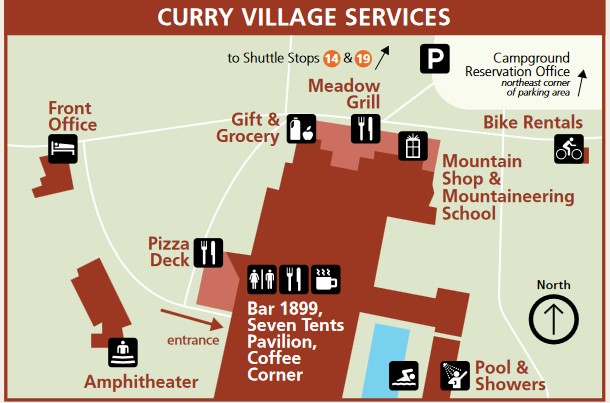
The waterfall coming down the cliffs behind the cabins with a bath at Curry Village is Staircase Falls (when there is sufficient water to flow).
Places to take photos of Staircase Falls in Yosemite National Park
– – – – – – – – – – – – – – – – – – – – – – – – – – – – – – – – – – – – – – – – – – – – – – – – – – – – – – – – – –
Yosemite Valley Lodge
offers rooms with a private bathroom, a TV (some with DVD player), phone, mini-refrigerator, writing table/coffee table or dining table and chairs, some coffee makers, in one or two story buildings without elevators, many, but not all, with either a private balcony or private patio, as well as free Wi-Fi, restaurants, a tour desk (and a swimming pool/bike rentals in the summer).
See details and pictures about views from rooms,
which rooms are connecting (adjoining),
building configurations,
links to Google maps 360 degree street views,
and more at:
Yosemite Valley Lodge
The three main rooms configurations are
Bunkrooms, “with a queen-size bed and a Bunk Bed (double-size on bottom bunk, single size on top),”
![]()
Traditional Rooms, “which include rooms with 2 double beds, 1 king-size bed, or 1 queen-size bed,” some set up to be accessibility compliant,
and Family King Rooms which “have a king-size bed, a Bunk Bed (double-size on bottom bunk, single size on top), a sofa, a dining table.”
– – – – – – – – – – – – – – – – – – – – – – – – – – – – – – – – – – –
There are rooms with views of Yosemite Falls, but most of these are at least partially obscured by trees,
Here a view from a patio at the north side of the Cottonwood building, with Yosemite fall visible behind tree branches in the upper right hand corner of the photo, and traffic on Northside drive:
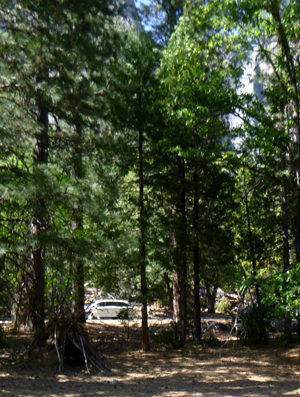
Some of the balconies and patios with public walkways beside them
but have the privacy of a tree that also blocks the view,
or a clear line of sight out towards the cliffs,
Some have a view of propane tanks beyond a row of shrubs,
or of a parking lot,
(with trees and shrubs or with few trees or shrubs between the patio and the parking lot),
two photos on the center and right are from patios at the Tamarack and Dogwood buildings)
The Cedar building has a covered walkway the length of the ground floor, with no private patio
(just two wood chairs in front of each room) and often a lot of foot traffic:
– – – – – – – – – – – – – – – – – – – – – – – – – – – – – – – – – – –
Here is a map of the services at the Lodge, courtesy of the Park Service:
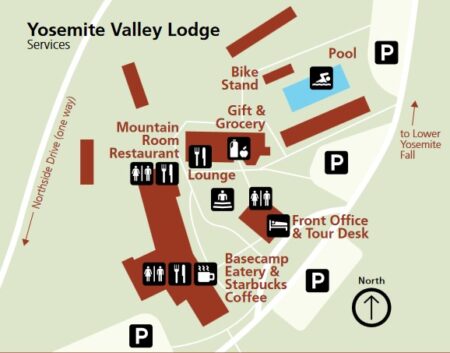
Note that the free Yosemite Valley shuttle bus (Valleywide Shuttle only), no longer has a stop right across the inner hotel road from the hotel front desk / office, but the current stop (#7) is farther down towards the Yosemite Falls day-use parking lot, near the Laurel Building.
There is a covered area at the end of the Front Office building ( lobby) that is used for tour buses and not for people to drive under at check-in (even if it is really raining). Note the 15 minute parking just below the brown box on the map that is reserved for people checking in.
Here is the lobby building and covered driveway (Porte Cochère):
Note that this is not the bus stop for the free Yosemite Valley shuttle bus.
Guests at the Yosemite Lodge in buildings Aspen, Dogwood, Tamarack, Elderberry, Cottonwood, Willow and Manzanita might find that getting of at shuttle stop 6 (Yosemite Falls) is a shorter, and more scenic walk back to their room than getting off at the Lodge stop #7. Laurel, Juniper and Hemlock are closer to stop 7.
The winter free bus to the ski resort / ranger snow shoe walk leaves (most years) from Curry Village, then from a covered bus stop adjacent to the garage in Yosemite Village, shortly after from the the Ahwahnee Hotel (again, in MOST years) and the last pick up is from the Yosemite Lodge Porte Cochère at the front desk (covered driveway in front of the hotel) 8:30 and 11 a.m.
here is the skiers bus taking on passengers under the Porte Cochère (covered driveway):
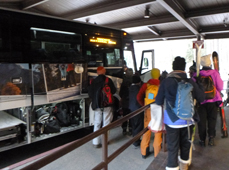
Guests of the Yosemite Valley Lodge and people who are not guests at the lodge can rent a bike there in warm months. Rentals are often offered at the Lodge for a longer season than at Curry Village. To pay and arrange for a rental go into the lobby and find the tour desk. Pick up the bike near the pool (see map above).
In warm months Yosemite Lodge guests swim in the lifeguarded pool (for free) and people who are not guests at the Lodge can swim for a fee:
http://www.travelyosemite.com/things-to-do/swimming/ 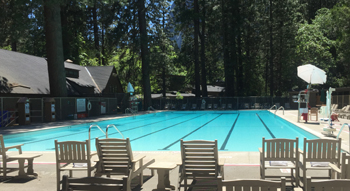
See also: Swimming in Yosemite National Park.
People who are not guests at the Yosemite Lodge can dine there.
Basic descriptions of food services and photos, links to menus for the Mountain Room, Mountain Room Lounge, Starbucks (formerly the coffee corner) and Base Camp Eatery (formerly the Yosemite Lodge Food Court) can be found at Yosemite valley restaurants, coffee bars, cafeterias, food service and groceries.
Cooking in/around Yosemite Lodge rooms is not allowed, but there is a picnic area, with picnic tables, fire grates, a swimming beach a short walk from the hotel, see map to Swinging Bridge at swimming in Yosemite National park and another nearby picnic area, with restrooms and picnic tables but without fire grates, across Northside Drive from the Lodge, about equidistant between bus stops 8 and 6.
Sometimes confused people with reservations for Yosemite View Lodge (which is outside of Yosemite National Park) have arrived at the front desk of Yosemite Valley Lodge, thinking that they had a reservation in Yosemite Valley. They are turned away when there are no reservations available in the valley for any lodging, which is frequent in warm months and holiday weekends.
During the 1997 flood, according to the NPS, at “Yosemite Lodge – 189 concession operated rental cabins flooded 5 to 8 feet deep. 172 concession operated motel rooms flooded up to 5 feet deep. 224 concession employee quarters and 15 support facilities flooded up to 8 feet deep. Underground utilities, landscaping and parking areas were also damaged.”
– – – – – – – – – – – – – – – – – – – – – – – – – – – – – – – – – – – – – – – – – – – – – – – – – – – – – – – – – –
offers rooms in the main building (multi story with elevators) or one story cottages (also know as cabins or bungalows) on the grounds, each room with a private bath, TV, phone, refrigerator, a few with an adjoining parlor/fireplace room. There is a year-round heated outdoor swimming pool (no lifeguards, open only to guests of the hotel), morning coffee, afternoon cookies/tea, optional valet parking and optional bellmen to take care of your bags, gift/souvenir shop, restaurants / room service, small and large public lounges with and without fireplaces. The hotel has “electric vehicle charging stations in the hotel parking lot . . . one is a Tesla Motors charging station.” The Yosemite Valley free shuttle bus stops at the hotel at stop 3.
A photo of the Ahwahnee from Glacier Point, the dining room and kitchen take up the left wing you see below. The main entrance is on the far side of the right wing of the building:
All the rooms have a safe, ironing board/iron, robes and a small refrigerator: 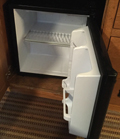
Almost all the main building rooms do not have a patio or balcony
(almost all of the Yosemite Lodge rooms do have patios or balconies).
Ahwahnee Standard rooms are smaller than other rooms, cost less, but most in the main building have cliff and loading dock views and two have no view at all. Most rooms are named Classic rooms, with various views depending on which side of the building they are on, and how may tall trees are blocking part of any given view. A few rooms are called Featured, each in the main building with a balcony (various sizes, often shared, some with a simple wooden partition).
Parlors, with or without a fireplace, can be had with some of the rooms.
Photos of views from Ahwahnee rooms and balconies are here.
Accessible rooms have widened doors, grab bars in the bathroom, raised toilet seats, low density carpet. Five have a roll-in shower: main building 116, 206 and 421, cottages 702 and 703. Other accessible rooms, with grab bar tubs but no roll-in shower, are 106, 219, 346, 507, 607. See details about Ahwahnee hotel Americans with Disabilities Act (ADA) rooms.
There is a larger version of the map below at map of the ground floor, and surrounding area of the Ahwahnee Hotel (and photos /descriptions of rooms, wildlife, waterfalls in the vicinity).
The Ahwahnee hotel full sized map webpage has summer and winter photos of rooms, balconies, parlors, (and the views from some of them), including the interior of the Presidential Suite with the huge balcony at the (south) far end of the Ahwahnee from the parking lot, the large third floor parlor with fireplace, two main building ADA Suites, 4th and 5th floor rooms that share a balcony, the El Dorado Diggins Suite Jacuzzi tub , sixth floor Mary Curry Tressider Suite, Library Suite, Underwood room, Sunroom Suite (Sun Porch), Mather, Spencer, as well as the locations of the dining room, front desk and concierge, Gift Shop, Sweet Shop, bar with summer outside dining, Great Lounge, Under Lounge, Winter Club Room , Mural Room, Solarium, swimming pool, kitchen, restrooms, the staircase to mezzanine and elevators (guest elevator on right, bellmen on left).
A map and floor plans for the 24 Ahwahnee cottages (bungalows / cabins), including the classic cottages that have an alcove between the bedroom and the bathroom with a bed you can fit a child on, and a door between the bedroom and alcove for privacy, are at:
Yosemite Ahwahnee Hotel cottages, (bungalows / cabins) floor plans and map
And see: Ahwahnee Hotel Americans with Disabilities Act (ADA) rooms and suites.
The prices for rooms can vary, especially when they have a special offer or if you include a Winter Fun package,
Vintners’ Holidays,
Bracebridge Dinner
or Chefs’ Holidays experience.
Details of some are at the Ahwahnee hotel map webpage.
Reservations are at: https://www.travelyosemite.com/lodging/the-ahwahnee/
Note that there has been a policy for
“SPECIALTY DINNERS
Payment Policy: Deposit requires full payment at time of booking.
Cancel Policy: 14 day notice is required for all changes and cancellations in order to avoid a penalty. Once within 14 days of arrival the reservation is nonrefundable.”
People who are not guests at the hotel can dine there. Reservations are often advised and there is a dress code for some dining room meals.
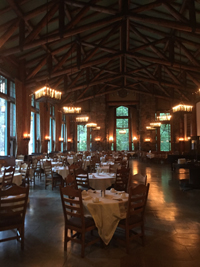
Menus for the dining room (including the Sunday Brunch) and bar are at: https://www.travelyosemite.com/dining/the-ahwahnee-dining-room/
There is a larger version of the map below at map of the Ahwahnee hotel.
Directions to the hotel and the covered entrance.
– – – – – – – – – – – – – – – – – – – – – – – – – – – – – – – – – – – – – – – – – – – – – – – – – – – – – – – – – –
The Yosemite valley hotels also rent out rooms for special events
from a contract with the park service:
. . . “limited to the following specific spaces within the Concession Facilities for group or special event functions:
(i) The Ahwahnee Hotel: Available year round: Colonial Room, Mural Room, Tresidder Room, Tudor Lounge, and Winter Club Room, Solarium, and Under Lounge
(ii) Curry Village: Available between November 1 -April 1: Lounge and Pavilion
(iii) Wawona Hotel: Available year round: Sun Room
(iv) Yosemite Lodge: Available year round: ClIff Room and Garden Terrace”
– – – – – – – – – – – – – – – – – – – – – – – – – – – – – – – – – – – – – – – – – – – – – – – – – – – – – – –
Housekeeping Camp
Is usually open, more or less, April to October, weather permitting, with “three-sided concrete structures with canvas roofs and privacy curtains . . . a bunk bed, a double bed, table, chairs, mirror, electrical lights and outlets. Two additional cots can be added to any unit” . . . each with “campfire ring with a grill grate and a bear-proof food storage locker. . . NOTE: Please do not bring space heaters, as they can cause a power outage in your Housekeeping Unit.” “Guests can rent sheets, blankets, pillows, chairs, cribs, cots and stoves for their stay at Housekeeping Camp.”
The Housekeeping Camp website said for each unit they provide 2 bear-proof lockers
“33 inches deep x 45 inches wide x 18 inches tall
17 inches deep x 45 inches wide x 17 inches tall.”
Google maps 360 degree view of some of the units.
Take a 3D tour of Housekeeping Camp unit number 61:
https://matterport.com/discover/space/2QF1afUSHoM
and click around at a 3D tour of site #262
https://matterport.com/discover/space/uXkYZV2FCFp
There are showers and a laundromat – the laundromat is sometimes open through the winter even when housekeeping units are not open. To find the laundromat, bear left when you enter the Housekeeping parking lot off of Southside drive.
Straight ahead when you enter the Housekeeping Camp parking lot is the grocery store and guest registration. Take a 3D tour of the Housekeeping Camp store at https://matterport.com/discover/space/VZkNiEmvuzz
Housekeeping Camp units have no televisions, phones, microwaves, refrigerators or WIFI in the units and there are no restaurants onsite.
They recommend “ear plugs for additional sleeping support. . .Flashlight or LED headlamp and extra batteries. . .and a “padlock for your food storage locker.” (Bring good quality earplugs, not the simple foam ones, but the ones with a thicker wax-like quality.)
Wise people know that their cell phone will not function long enough or bright enough after dark as a flashlight (electric torch).
Photos and details about quiet hours, wood campfire hours, camp rules, reservations are at: https://www.travelyosemite.com/lodging/housekeeping-camp/
Detailed instructions and advice for first time visitors to have a better vacation in the Curry Village canvas- walled tent cabins has advice that applies to staying at Housekeeping Camp. For example, the logistics section includes this:
“When you get there, or at least before you go to sleep, stand on the front porch of your cabin and figure out where the nearest restroom is. In the dark, even with a flashlight or headlamp, finding your way there could leave you lost or at least a bit frustrated. The restroom is between which other tents / buildings? Which end is the men’s restroom and which end the women’s? Which part of the side / end is the entrance? What route should you take to miss the large puddles that could need wading through if it rains much more? (Trying to get into a linen storage building you mistake for a restroom in the middle of the night . . . is no fun.)”
Expect more crowded conditions on the beaches at Housekeeping Camp than those in this early-in-the-day photo of the biggest beach:

Map showing Housekeeping Camp, the biggest beach, the pedestrian bridge over the river to other swim beaches, (as well as the laundromat and showers):
http://www.travelyosemite.com/media/330396/housekeeping-camp-property-map_web.pdf
On the map above, notice the pedestrian bridge across the river next to units 48/47 you can use to go to this beach:
Google street map view of the pedestrian bridge and the beach on the far side of the river.
Housekeeping camp is bordered by the Merced River as it flows through Yosemite Valley. Below is a photo of the camp, mostly on the left hand side of the photo below, as seen from Glacier Point, along with beaches at the camp and across the river from the camp. The pedestrian bridge mentioned above is in the center of the photo below. The bridge / roadway shown in the lower right hand corner of the photo is Stoneman Bridge, where rafts are often launched from.
Here, an aerial photo from more directly overhead:
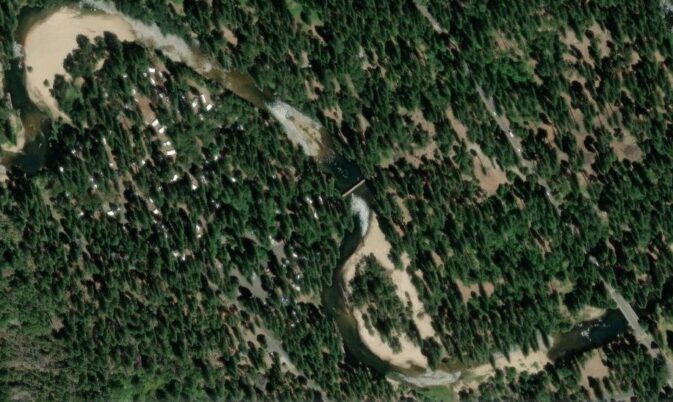
The Merced River Plan, ( see page H-18) has projects to improve views by removing trees. It says about the view from Housekeeping Camp Bridge:
“The Housekeeping Camp Bridge over the Merced River is adjacent to the Housekeeping Camp, located a half mile east of Sentinel Bridge. This bridge was constructed in 1929 and is a contributing structure to the Yosemite Valley Historic District. The primary vista is of Yosemite Falls, over the Merced River. There are a limited number of ponderosa pines in the middle ground, approximately 500 meters downstream that could grow taller and block the view in the future. It is recommended to monitor and manage this vista and remove the trees if necessary in the future. . . It is recommended to manage the bridge vista, and not the beach vista, because management actions would be identical.”
17 Ponderosa pines are on the plan to possibly be removed. Below is the picture of the view from the plan.
See details about swimming in the river at: swimming in Yosemite including thunderstorms, bacteria in the water, safety issues, favorite beaches, swimming pools with lifeguards that are open to the public.
If they are available, you can reserve a (near the) river-side unit when you make your reservation. Take a look at the map and notice that if you rent two near-the-river, back-to-back units, away from the main beach, such as 391/392, you might have a little more privacy:
Housekeeping Camp is across the road from free Yosemite Valley Shuttle bus stop number 12.
Flooding (most likely in the winter when heavy rain raises the river level) can occur:
or this was the result of the 1997 floods:
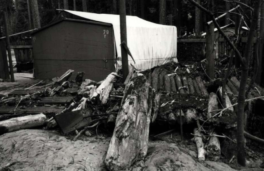
During the 1997 flood, according to the NPS, at “Housekeeping Camp – 250 concession operated rental structures, one laundromat, ten restrooms and two shower houses were flooded by water ranging in depth from 2 to 10 feet. Debris and sand deposition was extensive”
– – – – – – – – – – – – – – – – – – – – – – – – – – – – – – – – – – – – – – – – – – – – – – – – – – – – – – – – – –
Camping in Yosemite Valley campgrounds that take reservations

map of Pines Campgrounds (Upper Pines, Lower Pines and North Pines) and free shuttle bus stops 15, 18 and 19. (Upper and Lower River Campgrounds no longer exist, due to flooding and have been ecologically restored.)
Info about getting a reservation for a Yosemite campsite (in the valley or elsewhere in the park), camping regulations and more starts at:
https://www.nps.gov/yose/planyourvisit/campgrounds.htm
When you get to the reservations page you should look for notes, such as:
“Upper Pines will be closed from January 31 through February 11, 2022 for annual hazard tree removal. Sites will reopen as work is completed.”
Answers to frequently asked questions are at:
https://www.nps.gov/yose/planyourvisit/campingfaq.htm
such as
“In May and June, why are so many campsites in North Pines and Lower Pines not available for reservation?
Spring floods are common in Yosemite Valley in May and June, with portions of Lower Pines, and, especially, North Pines Campgrounds becoming inundated. As a result, we don’t make the affected campsites available for reservation until we are sure the river will be at a safe level. Depending on conditions, these campsites may be available for reservation a few weeks (less likely) or just a few days (more likely) in advance via recreation.gov. If water levels are high, these sites may only be available in the park on a first-come, first-served, daily basis.”
Some of the Yosemite campsites that can be held back include: North Pines 136, 200, 201, 301, 303, 305, 306, 307, 308 and 401; ( or some years: 134, 135, 136, 200, 201, 203, 204, 206 & 301-522. Lower Pines 4, 27, 28, 29 and 55. (Perhaps most often held back are: North Pines 306, 308 and 401; Lower Pines 4, 27, 29 and 55.) They are not necessarily too close to the river, but they often have low spots that fill with large, deep puddles (small ponds?) where you would want to pitch your tent, use the campfire ring or get to your bearbox:
(When you are choosing a campsite you might want to not choose one of these if heavy rain is expected, as the puddles could reappear.)
and here, a flooded campsite #62 in Lower Pines:
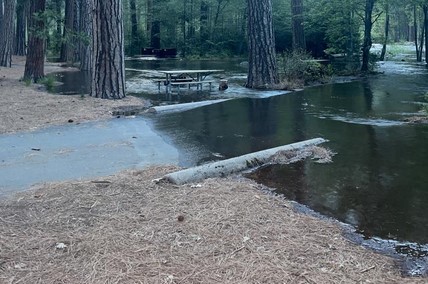
and flooding in North Pines campground:

and Tenaya Creek flooding into North Pines Campground:

The park has this warning for people with RVs/trailers choosing campsites: “RV length and trailer length are not the same! Please note that many campsites have different maximum lengths for RVs and trailers. This is because many of the campsites are back-in sites with limited turning radius. We do not enforce the length limits as long as the RV or trailer can fit on the parking pad in the site. However, if you reserve a site for equipment other than what you bring, and the site can’t accommodate your RV or trailer, we will not be able to find a different campsite for you.” There is also advice for driving / parking RVs & trailers at Parking and Traffic Jams in Yosemite valley tips and tricks.
This next info is mostly about camping in Upper Pines campground, but a lot of it applies to other valley campgrounds – – – for our winter trips the lowest cost overnight accommodation with a parking space right at at your accommodation is camping overnight in Upper Pines Campground, (the only campground open in the winter with individual campsites with parking spaces).
Yosemite valley campgrounds not open during the winter have various opening and closing dates. For example, Lower Pines and North Pines (including Backpacker’s Campground) campgrounds closed for the season on Monday, October 25, 2021. Only part of Upper Pines is open all year. 2021: “The back three loops of Upper Pines (loops 4-6) are closed for the season as of noon, Monday November 22. The front three loops of Upper Pines (loops 1-3) remain open for the winter on reservation-only. Any available sites are reservable online at recreation.gov, including any same-day cancellations.”
You make reservations for Yosemite campgrounds up to 5 months in advance. For example, for camping June 15 through July 14 2021, the date to try to get a reservation was February 15, 2021. They sometimes only open up 50% of some campgrounds.
Each campsite ($26 per night in 2019, 2020, 2021, $36 beginning October 1, 2021,) holds six people and two vehicles. But sometimes in the winter the campsite parking spaces are not plowed of snow well enough for two vehicles to park, especially two SUVs. This is fine with one SUV with six people in it, but many people will want to drive in two-people-per-vehicle carpools. They could possibly fit more people sleeping overnight (strictly enforced rules of maximum 6 people per campsite) and save money by paying for fewer campsites, by having some of those who want to drive in small carpools drop of their gear at the site and use free day-use parking for the extra vehicles. Maybe the car that gets to park at the site could pay a larger share of the campsite cost. The nearest free parking lot to the Pines Campgrounds is next to parking for Curry Village (briefly named Half Dome Village), a relatively short walk from Upper Pines campground or a free daytime bus ride.

Each Pines campgrounds campsite has a metal food storage box you must use for all food/toiletries , a picnic table, fire ring, (yup, you guessed it, no WiFi, sometimes not even on your smart-enough-phone that is not getting reception in much of Yosemite valley). Each campsite loop has nearby restrooms with flush toilets and cold running water.
In the pictures below, the Yosemite restroom building has men’s and women’s restrooms on either end and a center room with a basin for waste water disposal. See Have More Fun Camping.
and may have a sign warning that if you plug in your E-Bike to charge, you can blow a fuse and cut off power to the restroom building:
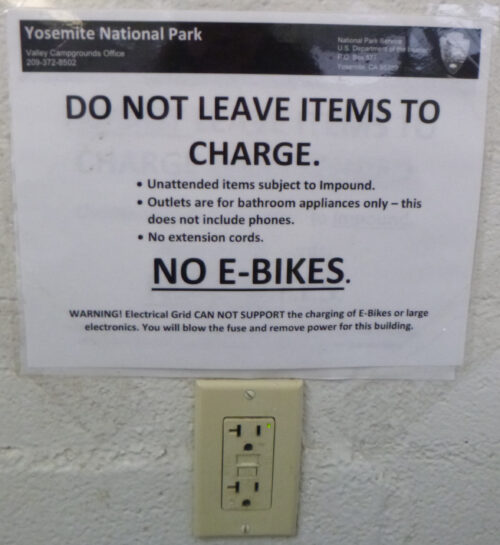
Most Yosemite campgrounds have restrooms or outhouses, some with nearby dumpsters and recycling bins.
Please separate out the recyling and find the appropriate bin or bring it home. If the 810,000 tons of aluminum cans Americans throw away every year were recycled we’d save 730 million gallons of oil by not having to make new aluminum.
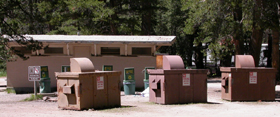
Please use the clip on the trash bin to lock it. If a bear gets into a dumpster on a hot day it can be a death trap.
If you notice one is un-clipped, please clip it.
Immediately report it to a ranger or campground host if the clip is missing from the dumpster.

In the photo above, the note on it says:
“Dumpster Full
This dumpster is full and has been wired shut to prevent black bears from accessing the overflow trash. Please do your part in protecting Yosemite wildlife by finding another dumpster to dispose of your trash. Thank you.”
PLEASE, when a dumpster is full don’t just leave your trash sitting next to it,
find another dumpster.
Restrooms in most public campgrounds don’t have hot water. And most public campgrounds don’t have showers. In the winter showers are at Curry Village, the Housekeeping Camp showers are closed. Camping solutions for women tells how to wash your hair.
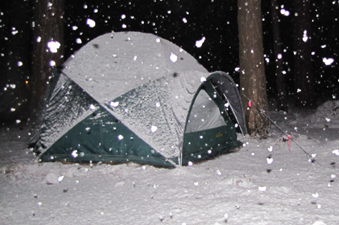
(Photo taken at 4:30 a.m. when it had been raining, but then it got colder and rain turned to snowflakes the size of fifty cent pieces, captured by the camera flash. One woman sleeping in the tent above on the 2011 trip had never been camping before. Another on the trip had never seen snow fall.)
Please note that no pets are allowed on our trips, but dogs are allowed in all campgrounds except group sites and Camp Four (but check for the most current rules when you make a reservation). There are no hook-up campsites for motor homes.
A campsite like Upper Pines #1 is not agreeable, because it is on the end of a row of sites, with a main campground road on one side of it, (to the left side in the photo below) and with large dumpsters that will create noise all times of the day and night:

Upper Pines Campground site #94 has dumpsters and is right next door to a restroom:

We wondered why that dumpster would need to have a sign on it that says Do Not Play On Or Around
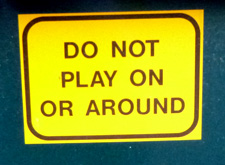
Occasionally on our winter trips we have had snow followed by rain and parts of the campground flood:
Here, a flooded and iced over parking space at Yosemite National Park Upper Pines campground site #4:
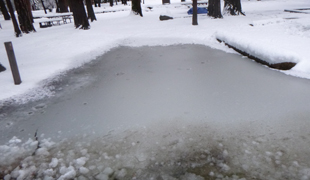
OR the campgrounds can be closed and people moved out, during heavy wind and or snow.
(“SNOWZILLA”. . . in February 2019, for 2 1/2 days all roads out of Yosemite Valley were closed and all campgrounds were closed due to heavy snow, high winds and risk from falling trees).
Here, a NPS photo of the result when a large tree broke in half and fell on a campground restroom, closing it for weeks:
(The photo above was taken AFTER the campground was vacated and closed due to the coming storm, and no one was hurt.)
Google maps street view of Upper Pines Campground.
The campsites that are the best for a short walk back after a Half Dome or Mist Trail/ Vernal Fall / Nevada Fall hike that took a bit longer than you expected and ended after the free shuttle buses are running, are those in higher numbered campsite loops (188 – 240 and 158 to 187) of Upper Pines campground.
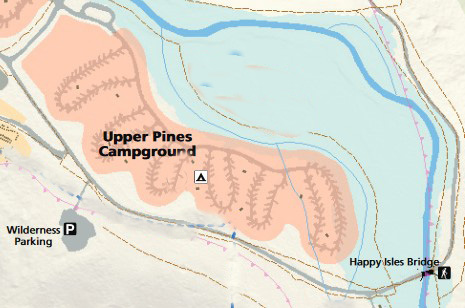
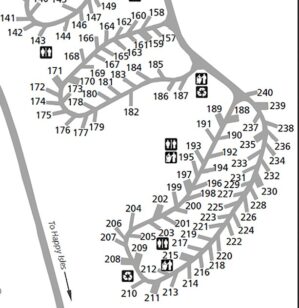
These campground loops are in the upper left corner of this map of the Mist Trail (in red) and John Muir Trail (in yellow):
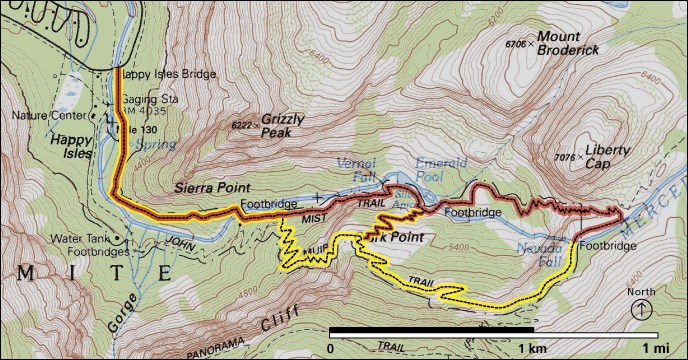
See on the map of Pines campgrounds:
https://www.nps.gov/yose/planyourvisit/images/pinescombined.jpg
Campground regulations, including Food Storage, Seasonal limits on Campfires, Firewood collection, Camping Outside of Campgrounds and Sleeping in Vehicles, Maximum number of people per Campsite, Maximum number of vehicles per Campsite, Seasonal limits on number of nights camping, Campgrounds that pets are or are not allowed in, Quiet Hours and Generator Hours, Wastewater disposal, hooking (or not) to Utilities, campground Checkin/Checkout Time and Slacklines, Hammocks, Clotheslines, etc.: https://www.nps.gov/yose/planyourvisit/campregs.htm
In the campgrounds you must pitch your tent IN your campsite, not down by the river at a nice small beach:
If you decide to pitch your tent “out of bounds” you might be lucky and find the violation notice (in this case from the campground host who patrols the campground) on your tent (or in this case, on a portable charcoal grill)
OR you might not be that lucky and could find yourself trying to track down your confiscated tent and gear.
Pitch your tent away from a campground and you can expect a visit from a Ranger:
and see Yosemite National Park regulations, policies and rules links
– – – – – – – – – – – – – – – – – – – – – – – – – – – – – – – – – – – – – – – – – – – – – – – – – – – – – – – – – –
During “prime visitor cycling season” (days vary year-to-year, but usually not in the winter, it closed for the season Oct. 29, 2021) the Yosemite Conservancy offers a bike share, with bikes available at campgrounds. “Visitors can use a mobile app to unlock a bike . . .”
https://apps.apple.com/us/app/yosemite-bike-sharing/id1466610241
https://play.google.com/store/apps/details?id=com.sharedbike.yosemite&hl=en_US
– – – – – – – – – – – – – – – – – – – – – – – – – – – – – – – – – – – – – – – – – – – – – – – – – – – – – – – – – –
If you expect lots of mosquitos you could pitch your tent IN a screenroom:
Camping in the Yosemite Valley campground with shared (or not) campsites, that can be first-come, first-served or by a lottery reservation
– – Camp 4 (Camp four)
(From the park website: “Within Yosemite National Park, you may not sleep in your car or RV except in a campsite that you’re registered to stay in (except at Camp 4, where sleeping in cars is not allowed because it’s a walk-in campground). Sleeping in your car along the side of the road is also not allowed.”)
Camp 4 (Camp Four) “is extremely popular; it’s very difficult to get a spot.” Camp 4 was first-come, first served most of the year. Some times of the year you register with a person at the kiosk shown on the campground map, some times of the year you self-register
Official details on how to use the lottery are at:
https://www.nps.gov/yose/planyourvisit/camp4.htm
Camp Four often has shared campsites. See map of Camp 4, with the location of each of the original campsites #1- #36, the (new in 2021) campsites #37 – #61, showerhouse and of the trailhead for the Upper Yosemite Falls hike as well as the location of the largest boulder within the campground, Columbia Boulder, (or Big Columbia), which has the “world’s most famous boulder problem” – the route named “Midnight Lightning.”
More pictures are at the map.
There is fascinating reading on how Yosemite climbers can avoid injuries/stay alive, by Search and Rescue (SAR) Ranger John Dill, (including sections on environmental dangers, descents, big wall bivouacs, unplanned bivouacs, loose rock, climbing unroped, leading, falling, learning to lead, the belay chain, helmets, states of mind, rescues, and risks, responsibility and the limits of climbing), at:
climbing advice
and read about climbing regulations, the reasons behind them and practical advice on how to follow the rules, including fixed ropes, permits and sleeping on big walls, food storage, trash and human waste while climbing, bouldering, slacklining, and bolting ethics at: https://www.nps.gov/yose/planyourvisit/climbing_regulations.htm
– – – – – – – – – – – – – – – – – – – – – – – – – – – – – – – – – – – – – – – – – – – – – – – – – – – – – – – – – –
Camping without a reservation: https://www.nps.gov/yose/planyourvisit/nrcamping.htm
Outside of Yosemite valley there are many campgrounds open in the summer that are first-come-first-served (and some take reservations):
Bridalveil Creek (RVs up to 35 feet/trailers up to 24 feet)
(Please note that Bridalveil Creek campground is up the Glacier Point road, nowhere near Bridalveil fall.)
Tamarack Flat (not recommended for RVs/trailers)
White Wolf (RVs up to 27 feet/trailers up to 24 feet)
Yosemite Creek (not recommended for RVs/trailers)
(Please note that Yosemite Creek campground is up the Tioga road, nowhere near Yosemite fall.)
Porcupine Flat (not recommended for RVs/trailers)
Tuolumne Meadows (RVs and trailers up to 35 feet; 50% of sites are available on a first-come, first-served basis)
and see: Tuolumne Meadows group campsites map and pictures
– – – – – – – – – – – – – – – – – – – – – – – – – – – – – – – – – – – – – – – – – – – – – – – – – – – – – – – – – –
Camping in backpacker’s walk-in
Googles maps 360 degree view.
For the current rules for backpacker’s campgrounds, go to: https://www.nps.gov/yose/planyourvisit/bpcamp.htm
The Yosemite Valley Backpackers campground is usually open the same dates as North Pines Campground, “April through late-October/early-November (approximately)”. For example, Backpacker’s Campground closed for the season on Monday, October 25, 2021.
Recently the NPS webpage said: “Backpackers campgrounds are available for wilderness permit holders to spend one night before and one night after a wilderness trip. Reservations are neither necessary nor required. However, a valid wilderness permit is required for backpackers to stay at the campground. Half Dome day hiker permit holders may not stay at backpackers campgrounds.
Visitors arriving to Yosemite by bus, bicycle, or foot may also spend one night in each backpackers campground.
(As of early 2025) The fee is $8 per person (pay using envelopes at the campground; exact change required).”
People at the valley backpacker’s walk-in campground have been told “you may park for 15 minutes at the entrance to the backpackers’ campground” (in the back of North Pines Campground, only a few spaces, sometimes filled) to unload gear and carry it to the campground, and then walk back out and “park overnight at the trailhead parking or at Curry Village (briefly named Half Dome Village) day use parking.” “If arriving at night, please be quiet as you unload your car in the unloading zone and walk to the campground.”
In spring in snowy years, the trail from the back end of North Pines (and over the footbridge) to the backpacker’s walk-in can be flooded with ankle deep or deeper water.
A Google maps 360 degree photo of the bridge and trail from North Pines as it enters backpacker’s camp.
You might find it more convenient to park as directed at Curry Village (briefly named Half Dome Village) day use parking, maybe get a shower at the 365-day-a-year shower house right up the service vehicles only road from the parking lot (see map above in the Curry Village section), grab your gear and make sure that in your vehicle there is no food / toiletries / scented fish bait / old french fries under the seats, get on a nearby shuttle bus stop at Curry Village parking, then get off at the Ahwahnee stop #3, (maybe making a stop at the largest Yosemite Valley grocery at shuttle bus stop 2 on the way). You will find it is a slightly shorter walk from the (Ahwahnee) bus stop through the parking lot, and through the valet parking lot, then make a left and along a back road to backpacker’s walk-in campground than from the back end of North Pines IF you can find the way on the back road, but you have a topo map, Yosemite Valley map in the park newspaper, right? And you won’t need to move your vehicle back and forth.
The Ahwahnee shuttle bus stop would also be a much shorter bus ride from backpackers walk-in to and from the main store, the cafeteria at the Lodge or to visit friends at Camp Four.
Hmmmmm, and the Ahwahnee has a bar without the dress code of the formal dining room that you might want to visit. Menus for the dining room and the bar are at: https://www.travelyosemite.com/dining/the-ahwahnee-dining-room/ A map of the premises is at: Ahwahnee map.
(Backpackers campground has been occasionally temporarily closed and moved to the end loop of Upper Pines.)
The Yosemite Daily report had this:
“Kudos to Valley Custodial Staff!
A huge thank you to the Valley custodial staff for their continued support keeping the vault toilets clean and supplied in the Backpacker’s Campground. Hikers continue to be happily surprised and comment that the “pit” toilets in the campground are some of the nicest they have used. The staff have all been very kind with a very positive attitude, even when they have, sadly, had to clean up after campers who have left very unpleasant messes in the bathrooms. Your efforts and attitudes are very much appreciated.”
– – – – – – – – – – – – – – – – – – – – – – – – – – – – – – – – – – – – – – – – – – – – – – – – – – – – – – – – – –
With a wilderness permit
you can make yourself at home overnight on the face of El Capitan
On May 11, 2021 Yosemite National park announced:
“Yosemite National Park To Implement Pilot Overnight Climbing Permit System Beginning Friday, May 21, 2021 – Yosemite News Release Release May 7, 2021
Yosemite National Park – All visitors planning to overnight on any rock climbing routes in Yosemite National Park will be required to obtain an overnight wilderness climbing permit beginning on May 21, 2021. This pilot program is being implemented to better understand how park visitors use Yosemite’s big walls and to help improve climbing wilderness ethics and reduce negative human impacts associated with overnight big wall use.
Overnight climbing permits will be available beginning at 8 a.m. on May 14, 2021. For the duration of the pilot program, these permits will be free. Please visit https://yosemite.org/climbingpermits/ to learn more.
For more detailed information on climbing in Yosemite National Park, please visit: https://www.nps.gov/yose/planyourvisit/climbing.htm.
This program will be a 2-year pilot.”
Notes about
Yosemite Valley free shuttle bus stops
for overnight accommodations to save you time.
Curry Village canvas tent cabins numbered in the 1100s, 700s and 600s are closer to stop 15 than to the Curry Village stops #14 and #19.
Guests at the Yosemite Lodge in buildings Aspen, Dogwood, Tamarack, Elderberry, Cottonwood, Willow and Manzanita might find that getting off at shuttle stop 6 (Yosemite Falls) is a shorter, and more scenic walk back to their room than getting off at the Lodge stop #7.
Laurel, Juniper and Hemlock are closer to stop 7.
Campers in Upper Pines campground in the higher numbered campsite loops (188 – 240 and 158 to 187, and maybe even 125 – 156) will find that it is a much shorter walk from the Happy Isles stop 16 to their campsite than from the official Upper/Lower Pines campground stop(s) 15/18 at the west end of the campground.
Campers in the Upper Pines and all of Lower Pines will find the stop at #15 gets them to their campsite faster than riding all the way to Happy Isles, the stop at the end of the road to Mirror Lake, past North Pines then finally getting off at the stop at the entrance to Lower Pines / Upper Pines.
(If you are heading into Upper Pines from stop 15, please don’t walk right through Upper Pines campsites 26, 27, 28 etc, at the end of the first loop after you get off the bus, please walk between the campsites and/or around the ends of the loops.)
Campers in the higher numbered sites in Lower Pines (60s, 70s, 80s, etc.) will often find when there are lines for and waits for space on the buses at Curry Village, it is more pleasant (and sometimes faster) to walk to their sites, using the boardwalk across Stoneman Meadow.
See also: services (minor emergency repairs, towing for some vehicles), available at the Yosemite Village garage. At that page you will find a list of locations of Electric Vehicle (EV) charging stations at the various hotels, near campgrounds, the Welcome Center and more.

The Yosemite National Park rangers would like you to call them
if you see a bear in Yosemite,
no matter where it is or what it is doing.
Since 2003 there has been a note in the Yosemite Guide: “REPORT ALL BEAR SIGHTINGS! To report bear sightings, improper food storage, trash problems, and other bear-related problems, leave a message for the Bear Management team at: 1 (209) 372-0322. Your call can be made anonymously.”
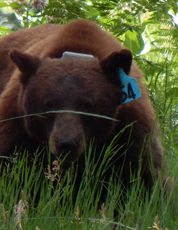
If you can, in all the excitement, try to notice if the bear has a tag (usually on the ear), the color of the tag and if possible, the number on it (the tag is large enough that with a telephoto lens you should be able to read the number).
From the Yosemite Daily Report newspaper:
“It is extremely important to remember to yell at bears that are in and around development, even if they are foraging on natural food. Though it is very tempting to get close for a picture, or just to watch these incredible animals, it is important not to give into this urge. Yelling at them if they are in residential areas or near people is critical to keep bears natural fear of humans. Giving bears plenty of space. When bears become too comfortable around people, they will often start causing damage to structures and vehicles, or will even become too bold around people, creating safety concerns.”
And the Yosemite Daily Report also said:
“Scare bears when you see them. . . in developed areas- Yell like you mean it!
Make as much noise as possible, try waving your arms, stomping your feet
or anything to make you look intimidating and to get the bear to run away.
We know it’s fun to see bears and it can feel mean to scare them,
but this is a simple way to truly help save a bear’s life.”



OR
a (National Parks and Federal Recreation Lands) Interagency annual pass is $80, valid for 2,000 federal recreation sites / National parks: https://www.nps.gov/planyourvisit/passes.htm
OR
find someone who is an active duty U.S. military member or dependent and has their ID Card (CAC card or form 1173) and can get a free national parks pass https://store.usgs.gov/MilitaryPass
(The passes can’t be transferred/shared, the pass holder needs to be in your vehicle and show a photo ID.)
“80 percent of entrance fees stay in the park and are devoted to spending that supports the visitor.” The https://www.nps.gov/yose/planyourvisit/fees.htm park entrance fee which addresses “many important maintenance and infrastructure needs,” covers your entrance into the park for your choice of payment for a length of time and size / type of vehicle, free parking at the various day use parking lots, use of trails / visitor centers, Ranger programs, walks, talks (but not fee based programs by park concessionaires, see lists of dates/times of each in the park newspaper).
Your park entrance fee does not cover the cost of your campsite or overnight accommodation.
(Campsites were once free in Yosemite.)
See more information and current prices / info about annual passes to all National Parks (or just to Yosemite), passes for seniors, free passes for military, free access (permanent disabilities) passes, some of which “may provide a 50 percent discount on some amenity fees charged for facilities and services such as camping, swimming, boat launch, and specialized interpretive services.” https://www.nps.gov/planyourvisit/passes.htm
Below, a topographical map from 1907 (reprinted 1927) showing the the hotels at that time, the allowed camping area “Auto Camp” (no formal campgrounds), as well as administration area. Note the line showing LIMIT OF PUBLIC CAMPING.
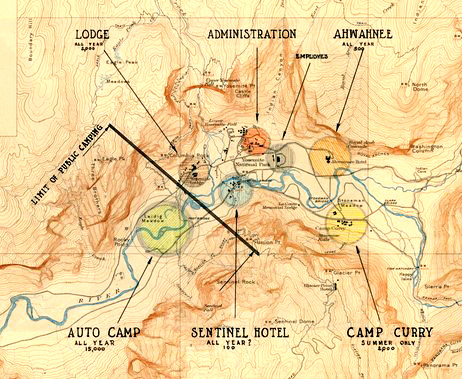
You should be able to find the full sized map at:
https://npgallery.nps.gov/AssetDetail/23e385df-400b-4ce4-9921-58d2000e70d2
__________________________________________
Yosemite camping in 1890:
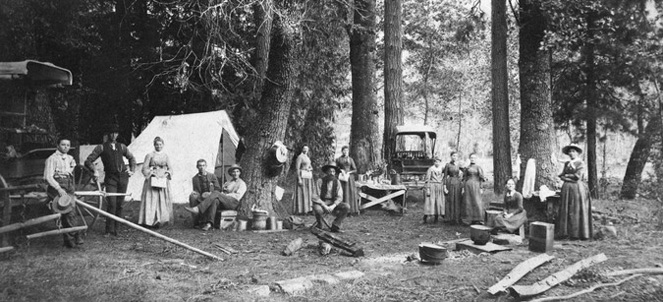
Yosemite camping without a “campsite” in Stoneman Meadow 1927:
__________________________________________
and in 1965 people camped (legally) in the Curry Village parking lot (Curry orchard) :
__________________________________________
In HISTORIC AMERICAN BUILDINGS SURVEY
THE AHWAHNEE HOTEL
HABS No. CA-2830
we read:
“Throughout the late nineteenth and early twentieth centuries, several privately-owned
lodging facilities were operated in the park.
Within Yosemite Valley, early accommodations included
the Lower Hotel (later Black’s Hotel) (1857),
Upper Hotel (later Hutchings’s Hotel) (1859),
Leidig’s Hotel (1869), Sentinel Hotel (1876),
Stoneman House (1886),
Camp Curry (1899),
Camp Yosemite (1901),
Camp Ahwahnee (1908),
and Yosemite Lodge (1915).
77 Hotels constructed outside of Yosemite Valley included
La Casa Nevada (1870), which stood at the base of Nevada Falls;
Mountain View House (1869), located along the Glacier Point Road;
Wawona Hotel (1878);
and the Glacier Point Hotel (1917)
Multiple small, informal campgrounds were also scattered throughout the park.”
__________________________________________
——————————————————————-
The author of this webpage, (written for my students), does not give any warranty, expressed or implied, nor assume any legal liability or responsibility for the accuracy, completeness, or usefulness of any information, product, or process included in this website or at websites linked to or from it. Users of information from this website assume all liability arising from such use.


